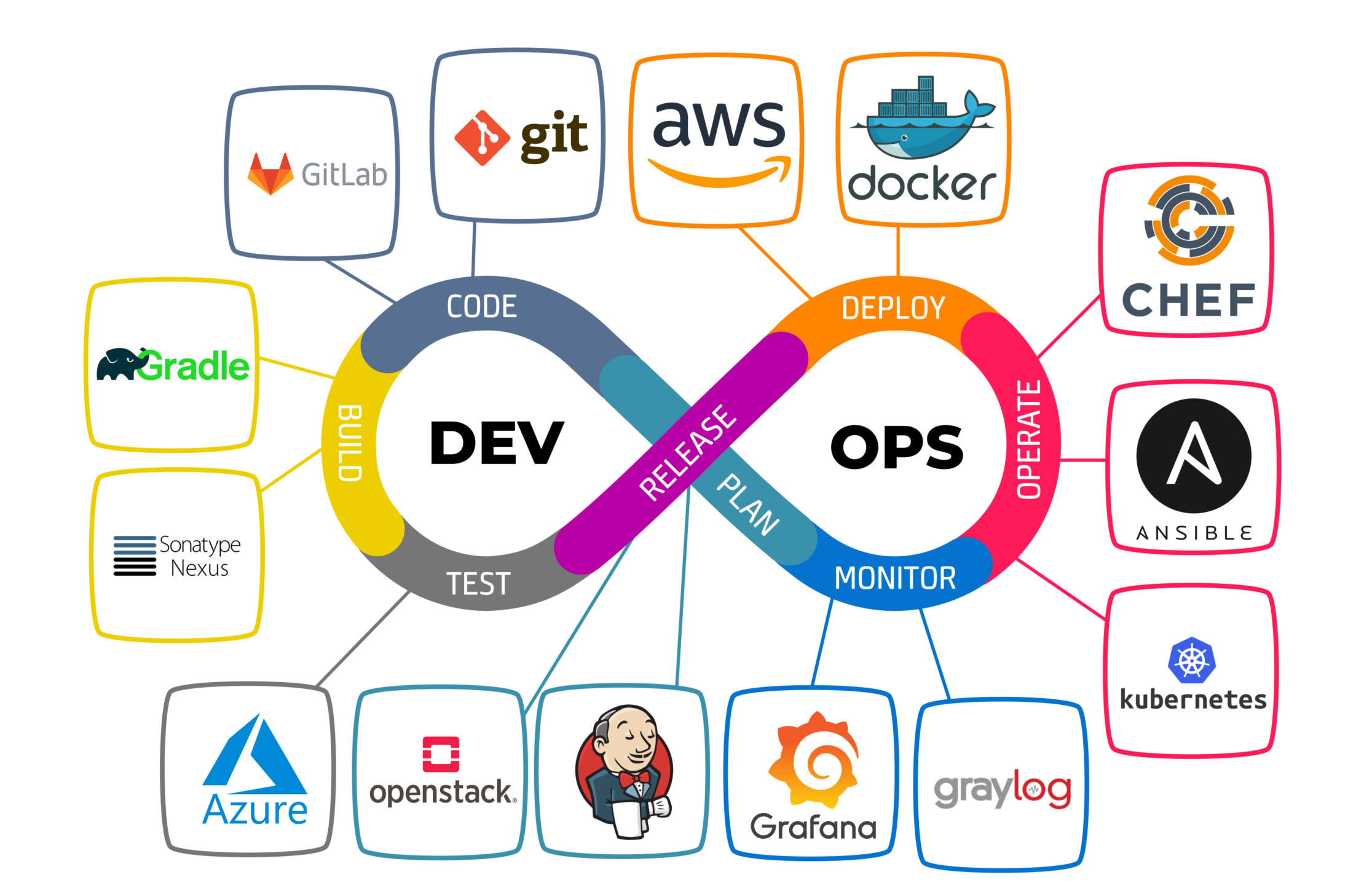Definition of DevOps model
DevOps is a combination of certain culture strategies, dedicated practices and tools that help companies accelerate the process of creating applications and services. With DevOps, the process of product development and optimization goes faster compared with the traditional model of software development.
One of the factors that led to emergence of DevOps was the advancement of cloud service platforms and the abandonment of on-premises hosting. With out-of-the-box services from AWS, Azure, Heroku, and DigitalOcean doing all the job, the selected infrastructure began to define the architecture of future applications. Moreover, the transition to microservices architecture led to the reinterpretation of application infrastructure by developers. As microservices needed to intercommunicate with each other, it was crucial to create production-like environments to run and test them. This became possible with DevOps practices that could be applicable throughout all stages of software lifecycles.
Point of contact
DevOps is often referred to as a culture rather than a role, and here is why. Emerged as a link between software development and system administration, it implies strong cooperation of dev, QA and operation teams. In other words, DevOps propagates close interaction between project teams together with involvement of each team member in overall product operation. Moreover, the practices that it brings require changes on company level and cannot be implemented isolated, within a certain department or a project group.
Knowing the work specifics of developers, QA specialists and system administrators, DevOps engineers bring together all elements that constitute a project. Understanding business needs, they organize the process with due consideration of customer interests.
How it works
DevOps dissolves the boundaries between development and operation teams. Sometimes these two groups join together collaborating on the application lifecycle in whole, from development and testing to deploying and running in production. Some DevOps models may also include QA and security engineers. If security is the top priority for all members of DevOps group, such an approach is called DevSecOps.
These groups use special methods to automate the processes that used to be executed manually and required a lot of time for this. With the help of certain technologies and tools, such DevOps groups are self-sustained and able to complete tasks that formerly required intervention of other teams, such as code deployment or infrastructure initialization.
Methods and practices
DevOps methods and practices help companies to implement innovations faster by automating pipelines and optimizing infrastructure management. Most of these methods are implemented by special tools.
One of the key methods involves frequent releases with small code updates. In this way companies are able to deliver new features to their customers faster. The changes made in code are usually minor and incremental in nature. This makes each deployment less risky, as the last failed deployment is easily identified, and enables faster bug tracing and fixing.
Using of microservices architecture allows to make applications more flexible and implement innovations faster by dividing large and complex systems in simple projects. An application is divided into separate components (services), with each service operating independently from each other. The services are developed concurrently by several agile teams, which speeds up development process.
However, a combination of microservices and frequent releases leads to increased number of deployments, which may cause problems on operational level. The DevOps methods such as Continuous Integration and Continuous Deployment tackle these problems enabling fast and secure delivery. The infrastructure automation methods — Infrastructure as Code and configuration management — help to maintain flexibility of computing resources and track their changes. Monitoring and logging enable engineers to keep an eye on application performance efficiency, so that they could respond to a problem quickly.
The list of DevOps practices includes:
- Infrastructure as Code (IaC)
- Continuous Integration
- Automated Testing
- Continuous Deployment
- Release Management
- App Performance Monitoring
- Load Testing & Auto-Scale, etc.
Conclusion
Speaking about DevOps, we mean an integrated approach to managing IT-processes that includes corporate culture and implementation of certain methods and practices. DevOps relies on enhanced communication between project teams to achieve key indicators of consistency and performance efficiency of working systems.
The benefits of implementing DevOps on a company level include:
1) keeping up with market needs and competitors due to accelerating delivery of new features
2) efficient usage of infrastructure and staff because of resources optimization
3) resilience of applications due to sustainability building
4) overall product quality enhancement with faster bug detection & remediation


